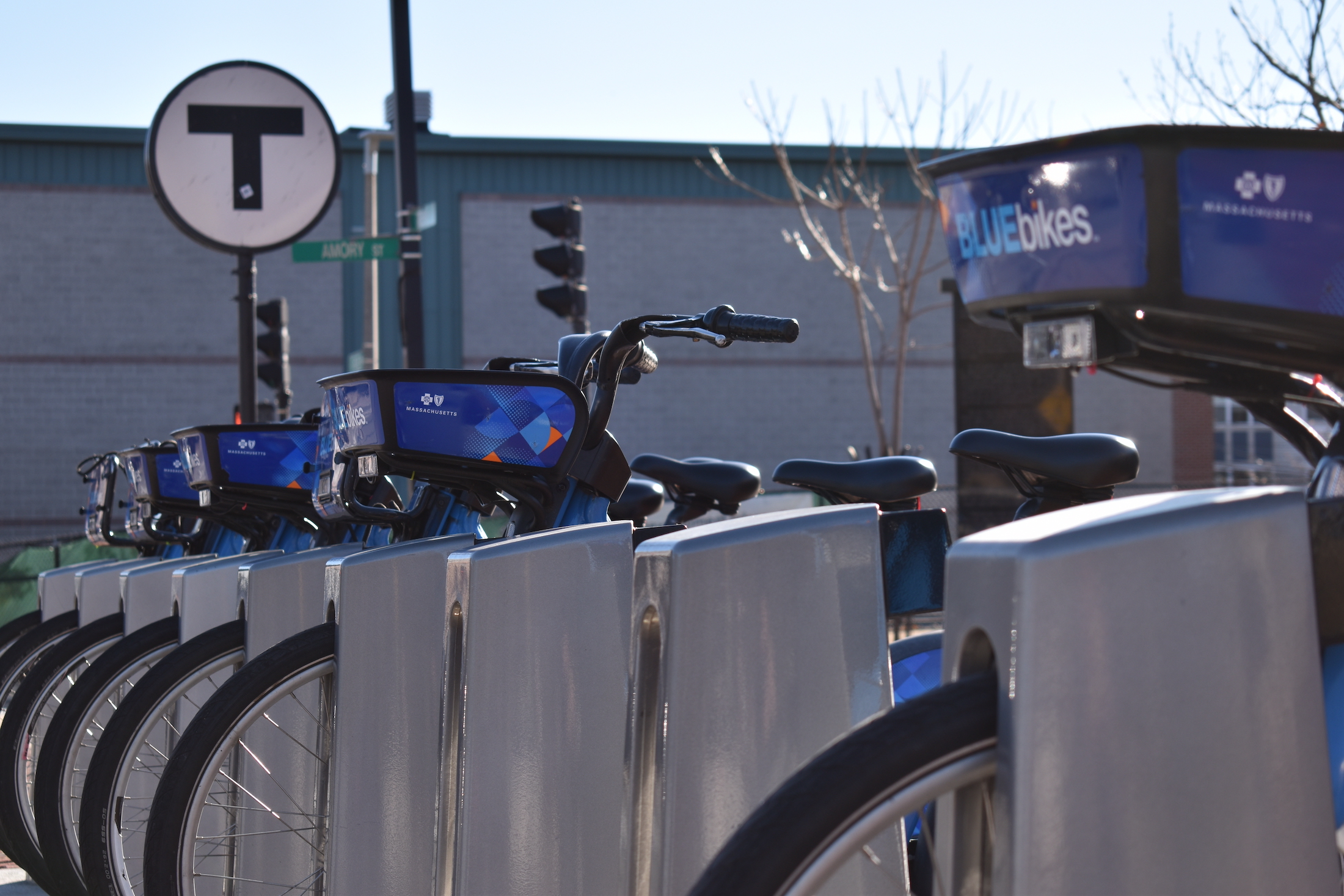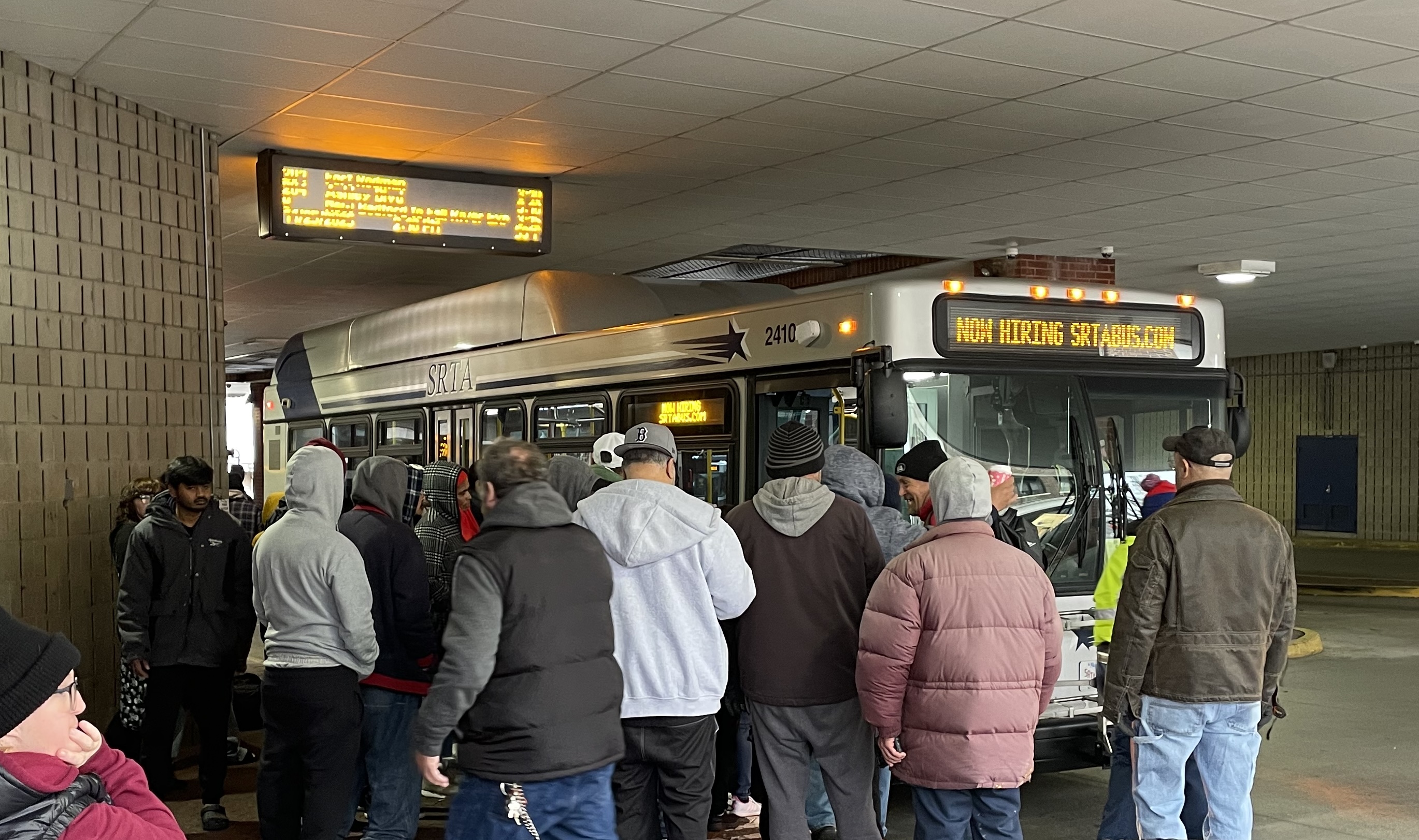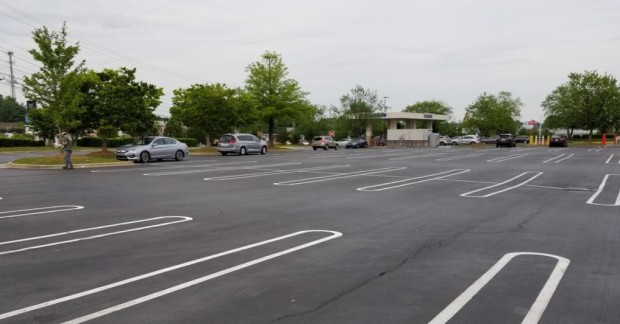
In the past year, we’ve seen ridership on Bluebikes like never before. In early October, the number of Bluebikes trips had already surpassed the total number of trips taken for the entirety of 2021, with nearly 3 million rides.
During the month-long Orange Line shutdown between August and September, over 58,000 people redeemed free monthly passes offered by the City of Boston, and the system broke new records for the daily number of trips ten times.
Even before a key subway line was taken offline for a month and free passes were given away by the thousands, momentum for Bluebikes was building. Earlier in the summer, Bluebikes tweeted that June went down as their third busiest month in history.
But this momentum could be hard to maintain as some people lose access to their Bluebikes stations during the winter months.
Since October, 56 Bluebikes stations have been removed across the system, mainly in Boston neighborhoods. With 50 of Boston’s 250 stations packed up and stored away, a fifth of the city’s system will be offline this winter riding season.
| Stations removed for the winter | Stations removed permanently | |
| Arlington | 3 | 0 |
| Somerville | 3 | 0 |
| Boston | 50 | 2 |
“Bluebikes stations are removed to allow for the clearing of snow without potentially damaging the stations or bikes. Stations are stored beginning in late November and reinstalled in early April,” a City of Boston spokesperson told StreetsblogMASS over email earlier this week.
But removals for some stations happened as early as October 25th this year, while the weather was still warm and great for biking. Day temperatures remained well above freezing through October and November this year.
The biggest loser has been Dorchester, which has had ten of its stations removed for the season – the highest number among all Boston neighborhoods.
| Boston neighborhood | Stations removed for the winter | Stations removed permanently |
| Dorchester | 10 | 1 |
| Roslindale | 5 | 0 |
| Back Bay | 4 | 0 |
| East Boston | 4 | 0 |
| Fenway-Kenmore | 2 | 1 |
| Mattapan | 3 | 0 |
| Roxbury | 3 | 0 |
| Downtown | 3 | 0 |
| South End | 3 | 0 |
| Other neighborhoods | 13 | 0 |
While none of these stations are among the system’s most popular, the ridership trends from April to September, when the stations are active, were heading in a positive direction. Some of the removed stations had seen their ridership nearly double during August and September.
Because the Dorchester neighborhood falls outside of the Orange Line’s immediate service area, the increase in ridership at those stations during the Orange Line shutdown can probably be attributed to the fact that when bikesharing was free, people took more rides, even if just for a short period.
Now with the subsidy and stations removed, are people still riding? Are some people walking a little further to the next nearest station or giving up on biking altogether for the winter and opting for a car ride instead? It’s hard to know.
Across the river in Cambridge, the city keeps their Bluebikes stations operational through the winter by “only placing them on sidewalks or other locations that are accessible to pedestrians,” a spokesperson told StreetsblogMASS over email earlier this week.
“If we identified a need for a station in a place that would require claiming space on the street, we would build a curb extension, but this doesn’t happen very often,” they added.
Even if a station ranks among the system’s most popular, it is still not exempt from winter removal.
Outside of the Dorchester neighborhood in a bustling intersection in Back Bay, the Beacon Street and Massachusetts Avenue station, located just feet away from the new dedicated bike lane across the Massachusetts Avenue bridge, was also taken out of service last month.
Last year, this in demand station racked up 31,233 rides, despite being offline for several months out of the year.
The spokesperson for the City of Boston says the city aims to place its stations in locations that allow for year-round operation, such as sidewalks, plazas and curb extensions, but that finding such places is not always possible, so the stations are instead installed in the parking lane.
“We are constantly working toward identifying year-round spaces for stations by incorporating plans for stations in City's sidewalk and intersection projects, as well as requiring space for bike share stations as part of development project review and approvals,” she said.
Progress is happening incrementally.
On Boylston Street in Back Bay, a station that had been removed for the winter last year will stay open this winter after the city rebuilt and expanded the sidewalk:
Newly rebuilt sidewalk in front of the Apple Store on Boylston St in Back Bay. Smooth concrete instead of granite tripping hazards and the curb has been bumped out so this @RideBluebikes station can stay in place through the winter. Thanks @BostonPWD! pic.twitter.com/6732Wj7czc
— Jacob Wessel (@jkwessel) December 2, 2022
In some cases, Bluebikes can be a gateway to year round biking. Earlier this month at a winter bike clinic, a participant shared how riding a Bluebike a mile to the train station for a year in all kinds of weather, motivated him to pursue biking longer distances on his own bike this winter.
Through a number of initiatives, the City of Boston is hoping to encourage more biking across the city.
“A connected network is worth more than the sum of its parts,” reads the city’s website, Everyone Deserves Safe Streets. The Bluebikes stations are also links in our bike network, where people sometimes start a ride or choose to end a ride depending on their trip needs.
But if a fifth of the city’s bikeshare stations are unavailable for several months of the year, and the stations removed are concentrated in neighborhoods already lacking quality transportation options, it’s going to be difficult to see biking as a year-round transportation option.
According to the city’s spokesperson, Boston will spend “about $100,000 to store the stations this season.”






